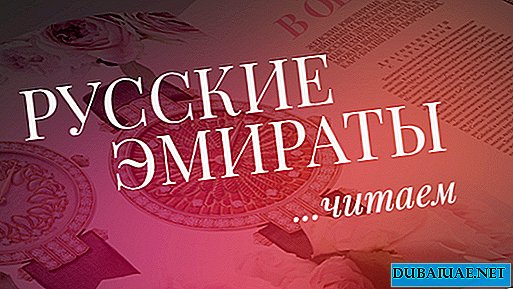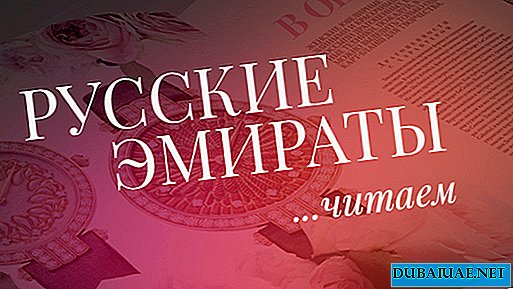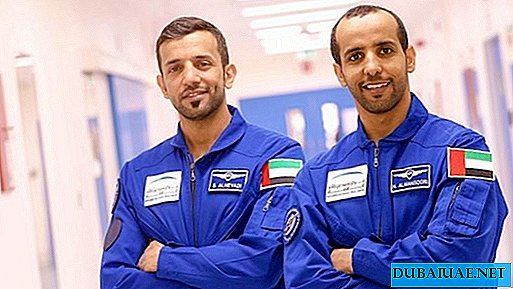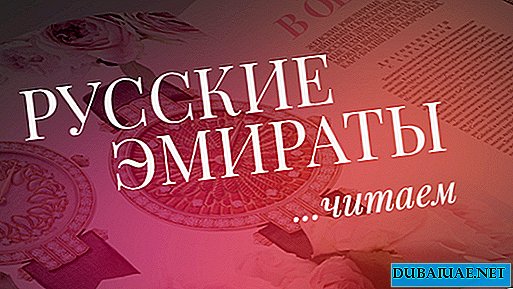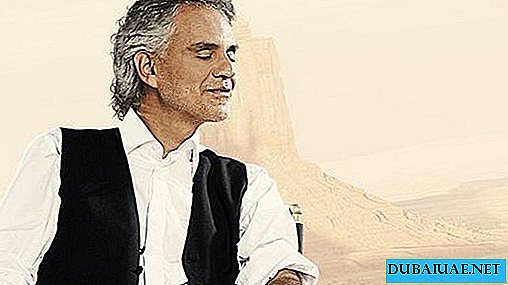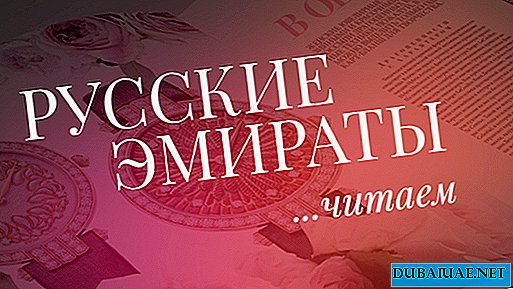Dancer, choreographer, director and head of the Charity Fund. Marisa Liepa, Andris Liepa plans to revive all the performances from the repertoire of the famous ballet company of Sergey Diaghilev. On his account there are already eleven restored productions of the era of "Russian Seasons", and in the coming years he wants to "return to the scene another five hundred forgotten masterpieces." For two decades, Andris Liepa and his team have been carefully reviving the repertoire of Diaghilev’s. Among the performances restored by them are “Parsley” and “Firebird” by Igor Stravinsky, “Scheherezad” to the music of Nikolai Rimsky-Korsakov. Next year, another revived ballet will be shown - "Cleopatra" by Anton Arensky.
Recall that the first Russian ballet troupe for touring in Europe was founded in 1911 in Monaco and opened its seasons in the south of France. "Many new trends in art were born in the 20th century in Russia.
The ballet company, formed by Diaghilev, made a real revolution in the world of dance with its artistic innovations, "Andris noted. About creative ideas, Russian ballet and plans to popularize Russian art in the United Arab Emirates, we talked with Andris Liepa when he flew to Dubai to study details of future tours.
Andris, let's start with the fact that Sergei Diaghilev ended up in Europe at the beginning of the 20th century and began to hold the first Russian Seasons there. Let my question not seem strange to you, but Diaghilev went to the West, and today you go to the East, why?
 Well, I would say that the East is not only the Emirates. For us, "East" is a tour of Russia, in ten major cities where we have been performing for four years in a row. I see this as an extremely important mission. Sergei Diaghilev left for Europe in 1909, and after the October Revolution he did not return to Russia. Therefore, all the best dancers, artists, composers stayed abroad with him - and Ida Rubinstein, and Mikhail Fokin, and Igor Stravinsky, and Tamara Karsavina, and Anna Pavlova. Until 1929, while Sergei Diaghilev was alive, his "Russian Seasons" were in France, and then, unfortunately, they forgot him, and in Russia they decided not to popularize his work, since he was an emigrant. And only after 1992 in Russia began to recall Diaghilev and restore his role in the development of Russian culture.
Well, I would say that the East is not only the Emirates. For us, "East" is a tour of Russia, in ten major cities where we have been performing for four years in a row. I see this as an extremely important mission. Sergei Diaghilev left for Europe in 1909, and after the October Revolution he did not return to Russia. Therefore, all the best dancers, artists, composers stayed abroad with him - and Ida Rubinstein, and Mikhail Fokin, and Igor Stravinsky, and Tamara Karsavina, and Anna Pavlova. Until 1929, while Sergei Diaghilev was alive, his "Russian Seasons" were in France, and then, unfortunately, they forgot him, and in Russia they decided not to popularize his work, since he was an emigrant. And only after 1992 in Russia began to recall Diaghilev and restore his role in the development of Russian culture.
In fact, not a single person in a culture like Diaghilev can be found. It’s like Peter the Great, who, for our policy, has broken a “window to Europe”. So, when today the whole world is talking about Russian ballet, it is only thanks to the penetrative power of Mr. Diaghilev. It is impossible to imagine how in 1916-1917 he took the troupe to the United States and transported it to the 40 largest cities, and then conducted a tour in South America? And this is in those days when it was necessary to sail on the ship for two and a half months. And all this with the orchestra, with the scenery. It is unthinkable!
We recently returned from a tour in London, where we performed at the small Coliseum Theater. So there, in the foyer, there is a poster “1925. Russian Seasons. Sergey Diaghilev at the Coliseum Theater. This is not just a memory, it is part of the history of the theater! Therefore, we held the so-called London Diaghilev Seasons in London.”
And in 2009, we first arrived in Paris and in the theater on the Champs Elysees showed a special performance dedicated to the 100th anniversary of "Russian Seasons". They signed a five-year agreement there, and now every year we come there with a new program, which is a huge success. If we go back to history, then in the theater on the Champs Elysees the first "Russian season" in 1913, which started with the opening of this theater, began with the play "Holy Spring". Then the performance was booed, the audience simply did not understand it, but a hundred years later, in 2013, on the Champs Elysees, a new “Dedication to Diaghilev” will be held, from those grateful spectators who only a century later realized that Sergei Diaghilev was ahead of his time and the concept of "creative thought" for a century.
And yet, you are going to present the "Russian Seasons of Sergei Diaghilev" here. Why did you choose the United Arab Emirates?
You know, one day I saw on the Internet the Emirates Palace Hotel in Abu Dhabi, and read that it has a theater. I thought that its size and content quite suit me.
Then in the spring of this year, I flew to Dubai, visited Abu Dhabi, and, having examined the theater, I realized that this was not quite right, and in our understanding "there is no theater." For us ballet, it is important that the stage has a "second height". That is, all the scenery that I have is very beautiful and well transported, but I need to lower them onto the stage, and then raise them, and this is precisely this reserve of height on the stage of the theater in Emirates Palace. But there are no other theaters in the UAE either.
Therefore, we decided that we would tour here anyway and at the same time solve issues with the scenery. People of different nationalities live here and they need culture like air.
We decided that we would take electronic screens and project on them those numbers that are with the scenery of Bakst, Benoit and Golovin. This will be the “Firebird”, and “Scheherazade”, and a fragment from the “Armida Pavilion”, and some classic things. Indeed, Diaghilev himself had in his repertoire the Sleeping Beauty, Giselle, and Swan Lake. Therefore, we will bring here such a “mix” of the most outstanding ballet performances. Faruk Fuzimatov, Ilze Liepa, Irma Nioradze, young stars from the Mariinsky - Volodya Shklyarov, Wife Obraztsova will come here, very good guys will be from the Kremlin ballet. And it seems to me that we will get a very interesting program. Farukh will dance a magnificent Bezharovsky number to Mahler’s music; Ilze will dance his number, where she alone depicts both a man and a woman. It will be interesting and varied.
We must not forget that Diaghilev was such a person who always made his way through the inertness of that scheme and the framework in which art was located. That is, what they did not accept, he still had to punch and invite new choreographers, composers, artists to collaborate, and every time, with each new season, it turned out more and more modern. The last premiere of the Diaghilev enterprise was the play “The Prodigal Son” to the music of Prokofiev directed by Balanchine. Serge Lifar was dancing. It was just a revelation.
The same Balanchine put "Apollo". These are the performances that are still going on, and last year we celebrated the centenary of Zharptitsa and Scheherazade. Imagine! It's been a hundred years! What performance can go on for so long with the same choreography, with the same music and costumes?
Here I have a question. I understand that the scenery and costumes can be restored from photographs, some preserved sketches, but how can you re-create a dance drawing, its original choreography? Is it possible?
The choreography of those performances that were staged to good music was always preserved and did not disappear. Usually it is transmitted "from foot to foot." In ballet it is called that. Previously, there was no television, but everything was somehow preserved and, thank God, it was preserved. Now I specially made a film, calling it "The Return of the Firebird" so that the next generations of stage directors and choreographers can come and not be tormented, as I once, looking for all sorts of memories and chronicles. In addition, we have already filmed the performances "Blue God", "Parsley", "Bolero", "Armida Pavilion", "Tamar", "Vision of the Rose" and "Fauna Afternoon Rest" on video. That is, we have already shot 9 Diaghilev performances, and we have only 10 of them restored. Next year we will be staging Cleopatra.
And a year later, I will probably take up the “Golden Cockerel”, to which there are magnificent scenery and costumes by Natalia Goncharova. They are almost completely preserved in the Tretyakov Gallery. That is, with this material you can begin to work. The Golden Cockerel was the first opera and ballet performance, during which opera artists stood on stage in the form of sets and sang, and ballet dancers. The premiere of this production took place in 1914.
Where do you find, or maybe educate, young artists who are able to reproduce what they danced 100 years ago? After all, much has changed in the very approaches of choreography?
Firstly, I myself am a dancer and as a choreographer I work a lot with other artists. Young dancers and stars of the ballet scene are always tested at these performances, then it can be technically possible to dance the Zharptitsu, but it is very difficult to become a real Firebird of the performance in which Tamara Karsavina once danced.
Here you will see how Nina Ananiashvili brilliantly dances, as she learned this part in London, in Covent Garden. Why there? Because Tamara Karsavina lived in London until the 1960s, where she showed her art, after her the very famous English ballerina Margot Fontaine danced the Firebird, and Nina already learned this part after Margot. That is, it turns out that we restored the “Firebird” according to records with Margo Fontaine, who was already filming then, and she worked directly with Karsavina, which means that the drawing of the dance was transferred “from foot to foot” and reached us.
 Tell me, Andris, you grew up in a family of famous ballet dancers. Did you consciously come to the career of a ballet dancer, or did your parents bring you to this choice?
Tell me, Andris, you grew up in a family of famous ballet dancers. Did you consciously come to the career of a ballet dancer, or did your parents bring you to this choice?
Leading a child to something is almost impossible if he himself is not interested. My father was a terrific example for me and my sister. He was a brilliant hard worker. The profession of a ballet dancer can be compared with the work of, perhaps, a miner. This is hellish work, believe me. The only profession that is even more difficult and can qualify for the championship is a circus artist. I work a lot and often with the circus and I understand that every movement there is a risk to life. We have a health risk. You can fall, tuck your leg, tear the ligament. Just like in sports.
No one is insured against an accident. But unlike miners, we cannot show what is difficult for us. We must always smile and do our work beautifully and with inspiration. The girls on my fingers always cause tears in my eyes. If you ever saw their blood-stained legs!
Ilse before our tour in France broke her little finger on her leg, and, nevertheless, danced four performances in Paris, then seven more in London on a “freeze”. Well, who else can do this? Here, people are completely immersed in the world of ballet, and they don’t see another for themselves. Therefore, working with them is a pleasure. As a tutor and director, I deal with a large number of young artists, and they are no worse than previous generations of Russian dancers. Maybe our older generation was a little more powerful, because there was a powerful ideological education. This feeling that you are part of a huge state, and on your shoulders lies responsibility for the country, gave a powerful motivation - to be the best. There was nowhere to retreat, everyone knew - Moscow is behind us!
But it’s true that in the USSR, sports, ballet, space and the circus were such “whales” on which pride stood for our common powerful state. What today?
Yes, Russian circus, Russian ballet, Russian space, and caviar yet. Since the days of the USSR, it has been heard around the world. We were the best. Today we can talk about the fact that the Chinese are stepping on our heels in sports, but not everything is so simple here. In sports you can hide behind equipment and get a championship for it. But no one will evaluate you in ballet as a technical performer, you have to convey the right image. Of course, there are capable dancers in other countries. But here Prince Albert from Giselle or Aurora, only ours can dance well.
I'll tell you honestly, I worked at the Bolshoi Theater, then at the New York City Ballet, in America with Baryshnikov, then at Maurice Bejart, at the Grand Opera, in La Scala, in Roman and Swedish operas, at the Mariinsky Theater . I’m telling all this not to boast, but to show that I worked in various countries, and I know for sure that no one can get ahead of Russian dancers. We have been and remain the best. Moreover, ballet dancers are well aware that they must be assigned to some large company. And as a result, many of them remain at home in Russia. The same Ulyana Lopatkina, Diana Vishneva, Kolya Tsiskaridze. They are not running anywhere.
How did you end up abroad?
The fact is that I was the first Soviet dancer who at the end of 1989 received official permission to work in the American Ballet Theater. And it was amazing! Firstly, I worked for the person who was officially considered to be a traitor to the Motherland and the persona of the “nongrata” in the Union. I am talking about Mikhail Baryshnikov. I can only attribute this to the paradoxes of perestroika. In America, they called me “Perestroyka Kid” ("Child of Perestroika"). But then I showed that it is not necessary to run to the West, there is always the opportunity to return. Thank God, many dancers now travel the world, tour, but always return home. Because, such a theater, such a school, such classes do not exist anywhere else. It’s very good to visit, but it’s better to be assigned to your own theater.
How difficult was it for you to take the first steps in art, being the son of Maris Liepa, whom the whole world knew?
On the one hand, yes, it was difficult for me to start, but on the other, I realized that I needed to do my job not at 100, but at all 200%. And today I am aware that then, in search of my face and handwriting, I needed to do a hundred times more than any other child, because my sister and I were paid increased attention.
However, here you need to understand that in the profession of a dancer, parents can not do anything for you. It’s good when someone can write a dissertation for you. But when you go on stage, and no matter how long before that, dad talked to you, if you do not pull yourself, then nothing will come of it. It’s possible for singers to correct the sound of a voice or a phonogram, nothing can be done with us. If you went on stage, you have to dance. And if you participate in the competition, and I had three important competitions that gave me a ticket to life and the opportunity to work in America, then I must generally gather all my strength. During one of the contests in 1986, Nina Ananiashvili and I took the Grand Prix, and this was the first bridge for my work in the USA. I still have great respect for everything that is in America, but something is missing there too. Therefore, in 1991, I returned back to Russia. And he danced for seven years on the stage of the Mariinsky. Then there was an injury, and I injured my leg on a tour of the theater in Washington. And it helped me realize that all this is God's providence. After this injury, I realized that I needed to move from dancing to business. Because when you dance, you are only responsible for yourself, your costume and your role. And when you are responsible for 80 artists, as many orchestra students, for the scenery, for advertising and everything else, the measure of your responsibility increases at times. There are practically no people who want to take responsibility now, and if it still does not bring any tangible dividends, then you will not find anyone at all.
What character traits did you find in yourself when you headed the Fund named afterMarisa Liepa, becoming a leader and starting to restore the lost heritage of Sergei Diaghilev?
I enjoy it when people perform well. They need to infect everyone with a common idea, to prove that this is not false, that this is real.
For example, now, when we arrived in London, and the audience in the hall applauded after the Firebird or Bolero, the artists who had just arrived at the Kremlin Ballet and the real stars of the Russian ballet scene knew perfectly well that this could not be bought for no money. In Moscow, you can invite your friends, relatives, acquaintances who will pat you at the premiere, but in London this is impossible. If you are accepted, then with all my heart, but if not, then no. And that’s it. The reaction of the public is very well shown touring abroad. And we also travel around the country. Ten cities of Russia every year. Thanks to our sponsors such as Gazprom, Russian Railways and Olympic City, we have been touring in Paris for three years and travel to Russia for four years, where the tour starts from late October to late November and includes Yekaterinburg, Perm, Chelyabinsk , Novosibirsk. This year we want to go to Magnitogorsk, Kazan, Nizhny Novgorod, Yaroslavl, Tula. This year will be the fifth, anniversary, in our touring activities. Nobody else drives like that. This is our private project, a private enterprise.
"Russian Seasons" by Sergey Diaghilev was supported by outstanding businessmen of the early twentieth century, philanthropists, and simply admirers of his work. Does your troupe have patrons?
Yes. Patrons also help us. For example, Stolniy Grad company and its director Viktor Shtil gave money for three ballets - Blue God, Tamar and Bolero. This is his investment, he allocated funds for the scenery and costumes, and thanks to him, we restored these three performances. Something, of course, we do ourselves. The fund exists and earns by holding special concerts.
Unfortunately, now in a crisis, many entrepreneurs have lost a lot of money, and usually in such a situation, the first thing that costs are cut is culture. We are not particularly worried about this, because over the years of its existence, and this is 18 years old, the project "Russian Seasons of Sergey Diaghilev" has reached a qualitatively different level. We pay for ourselves, plus we are supported. There is nothing to complain about.
Are you not offended that the budget of our state does not have funds for projects like yours? After all, this is the preservation of the cultural heritage of Russia ?!
If I thought about it, I would never do anything. Actually, Sergey Diaghilev did not think about this either, he died in Paris in 1929 in utter poverty, and Coco Chanel and Serge Lifar buried him. There is such an expression, "There are no pockets in the coffins." I have seen many very rich people in my life. These are dancers and businessmen. Well, so what? You can’t take anything with you and you can’t fly to the next world on three planes. When they come for you, it is also unknown. The most important thing is that after Diaghilev there remained such a fantastic train that the further he goes into history, the more they talk about him and the scale of his personality. We have already held an amazing exhibition dedicated to the work of Diaghilev. It was held in London, next year this exposition moves to Washington, as the year has been declared the Year of Russian Culture in the USA. I want to bring “Russian Seasons” there in order to show how the Diaghilev performances look in parallel with the exhibition. This year is the Year of Russian Culture in Spain and Italy, we will go to Rome on October 3, and to Madrid on November 3. And we will definitely come to the United Arab Emirates in the fall!
It always seemed to me that ballet dancers, giving themselves completely to the profession, as a rule, die out of life by single people. You have a family, a daughter is growing. How do you educate her by your own example?
Yes, and it seems to me that this is the best method of education. My father was never some kind of educator, he did not say what to do and what should not. But I, for example, do not smoke, I can only afford a sip of champagne after the premiere. Nobody ever told me that drinking and smoking is harmful. It's just that father was always a terrific example both in work and in life. Those things that I did not like, I myself rejected and told myself that I would not do this.
In my opinion, parents are always an example, and if they worked a lot and seriously in their life, then their children will work a lot and seriously. And if father and mother tell the child that they need to work, and they themselves sit on the couch for days, it is difficult to believe in this logic. However, all the same, there are no ready-made upbringing recipes. We were lucky. My sister and my father were a terrific creative person, and, unfortunately, left very early, at 52, so we wanted to continue what he did not manage to do in his life.
It was very difficult for him, 1989 was the moment of the complete collapse of the USSR and the collapse of everything that he sacredly believed in and served. The man simply did not know where to put himself. Indeed, it was during this period that Vladimir Vysotsky, Oleg Dal, and Leonid Bykov left. And moreover, they all burned out, turned out to be unnecessary, thrown out of new realities. It seems to me that this was a generation of great people. They are like bright stars, flying and left their indelible mark.
This year our father would have turned 75 years old, in honor of his anniversary, we gave a performance in Minsk. They also released his book “I Want to Dance A Hundred Years” with the comments of his associates who worked with him or studied with him, recorded a DVD with a documentary for 2.5 hours, made an exhibition of photographs. A couple of years ago, we held a similar exhibition in the London Coliseum, and people came there who, since 1975, remembered his Spartak. How did so many people get together? I dont know. The Coliseum accommodates more than 2,300 people! Now we are planning a tour of Russia with paternal performances and want to open a monument to him in Riga, where the City Duma gave us permission to erect a monument to Maris Liepe near the theater.
Now a new generation of young people is growing, who does not even know what theater is. True, recently, the beautiful film "Black Swan" was shown, in which Natalie Portman played, and interest in ballet art reappeared. Do you have no desire to open a ballet school somewhere abroad to teach the basics of Russian classical ballet?
In Russia, my sister Ilze and my wife Katya have their own ballet schools. We thought a lot about what it would be worth promoting the foundations of classical art in other countries of the world.
If we talk about the Emirates, then I think that first of all it is necessary to build a theater here. Here there is every opportunity for investment, and indeed, how is it in a country that today is not widely known in the world as a theater? This cannot be! And an art school is also needed here. Ilze Liepa, for example, has developed his own teaching method, and I believe that a ballet center is simply necessary here. I think that when we arrive in Abu Dhabi with the “Russian Seasons”, we will be able to give master classes for students of Sheikh Zayed University. We have already agreed on this with the organizers of our tour. It seems to me that it will be very cool for the Emirate children and youth to show the classics of Russian art.
Thank you, Andris. We look forward to seeing you in the Emirates with the “Russian Seasons”.
BIOGRAPHICAL HELP
Andris Marisovich Liepa (born 1962) is a ballet dancer. The son of Maris Liepa, ballet dancer, People's Artist of the USSR (1976) ... He graduated from the Moscow Choreographic School in 1981 (class A. Prokofiev). In 1981-88. artist of the Bolshoi Theater. Among his roles: Benedict ("Love for Love"), Prince ("Wooden Prince"), The Nutcracker ("The Nutcracker"), Romeo ("Romeo and Juliet"), Albert ("Giselle"), Desiree ("Sleeping Beauty" ), Jean de Brienne (Raymond). In 1988, he performed leading roles in the ballets Apollo Musaget, Symphony in C and Others in the troupe New York City Belay. In 1988-89. He danced in the American Ballet Theater of the Siegfried (Swan Lake), Romeo, Alberta, as well as the leading parties in the performances of La Sylphide, and the Violin Concerto in Ballet Imperial. Since 1989, he collaborated with the Theater. Kirova (Mariinsky) in St. Petersburg. Here he recreated the role of Petrushka, danced The Vision of the Rose, as well as the parts of Albert, Desiree, Conrad (Corsair), Solor (La Bayadere), Romeo. Classical dancer, predominantly lyrical plan, sensitive and reliable partner. His dance is light and powerful, and the romantic expressiveness of scenic images is always carefully thought out. Andris Liepa - the first performer of the roles of Macbeth (Macbeth, 1990) and Prince (Cinderella, 1991) in the Ballet of the Kremlin Palace of Congresses. He toured in theaters in Paris, Rome, Milan, and danced "Songs of the Wandering Journeyman" in the troupe of Maurice Bejart (1991). Since 1997, heads the Charity Fund. Marisa Liepa. Married, has a daughter.


